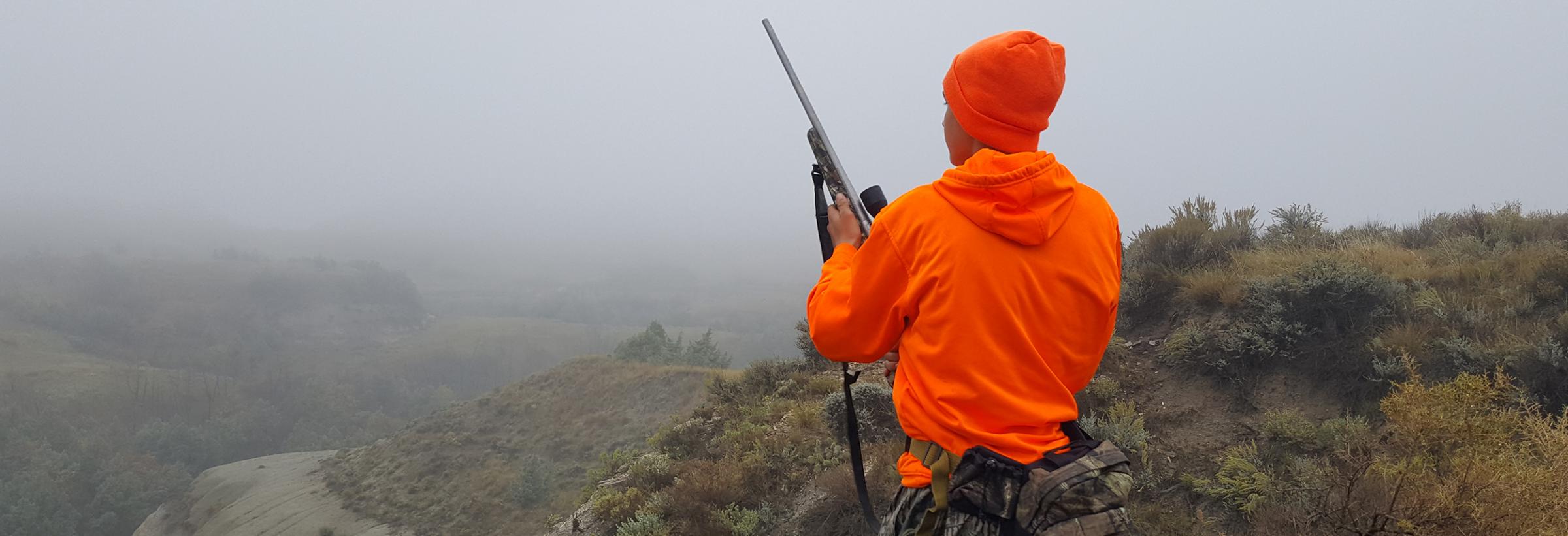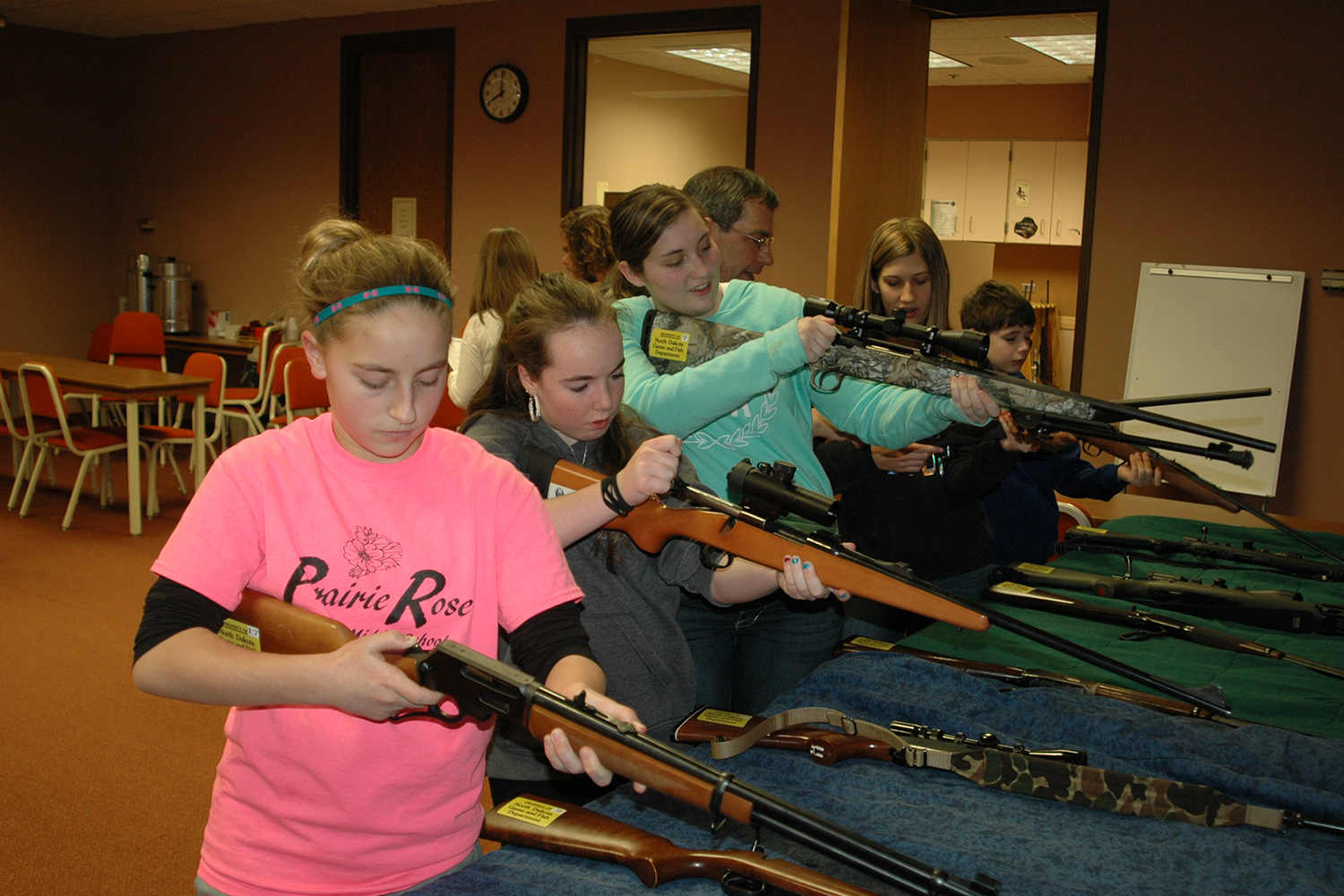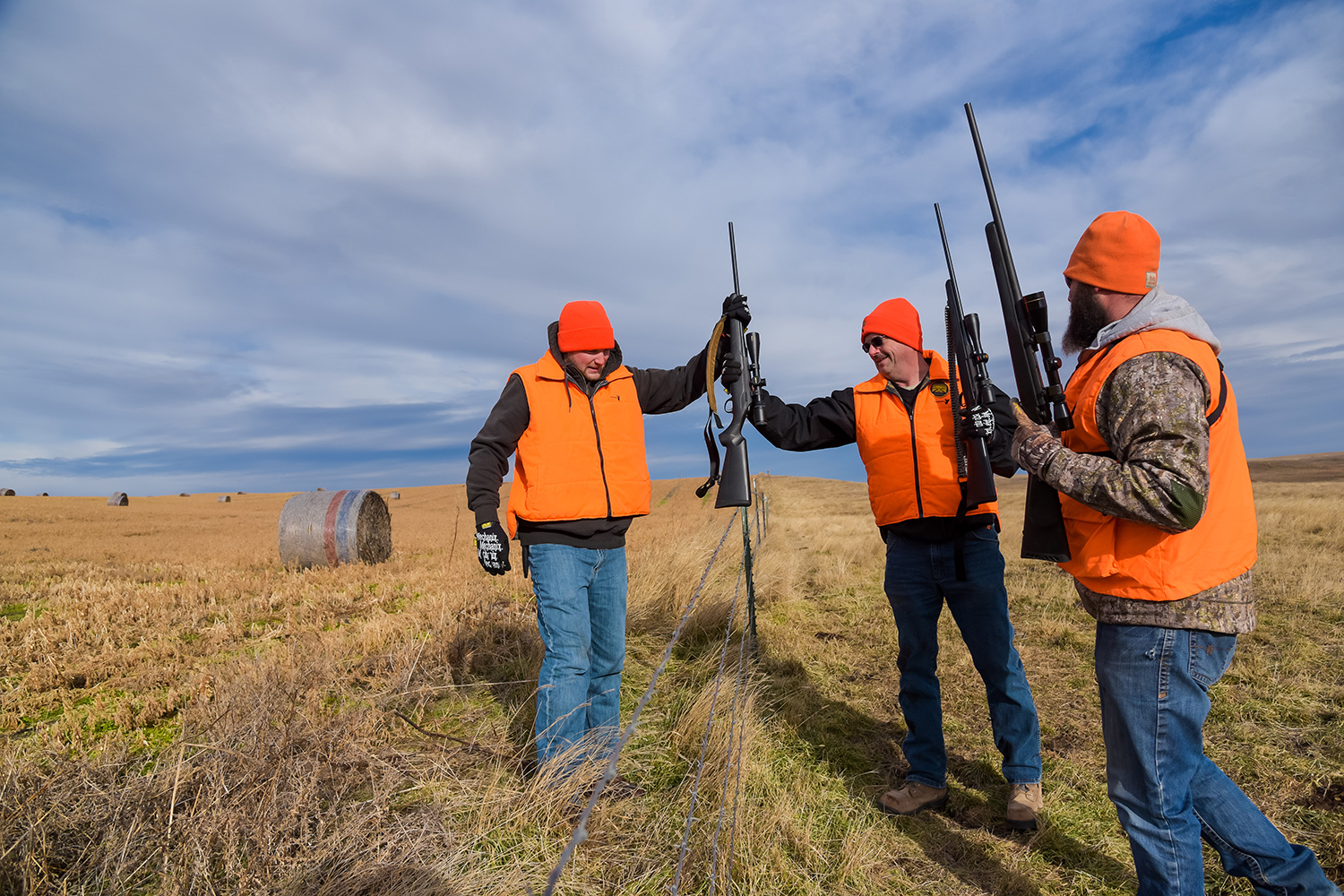
Program Has Influenced Generations of Hunters
A pioneering law in North Dakota’s hunting circles was applauded decades ago in North Dakota OUTDOORS, setting the course for safer days in the field.
“Hundreds, perhaps thousands, of thinking sportsmen around the state herald a new law as a landmark decision destined to contribute positively toward the improvement and continuance of their most beloved sport,” wrote William McDannold, North Dakota Game and Fish Department hunter education coordinator in the December 1977 NDO.
House Bill 1458, passed by lawmakers in the 45th legislative session in 1977 and signed by Governor Arthur Link, directed anyone born after December 31, 1961 who wanted to hunt in North Dakota to pass a certified hunter education course.
“My phone has been rung many times by dads calling to ask why in the heck Johnny or Suzie has to take the course. After all, he (dad) has taught the kid all he or she needs to know. I can’t doubt the parent’s word and must commend the caller for accepting the responsibility to give a son or daughter proper guidance. But at the same time, I am compelled to state that too many parents fail to give their youngsters enough – or any – training in safety and responsibilities before allowing them afield with a gun,” McDannold wrote in NDO in 1977.
“Once a year we have an academy for new instructors where they will learn a variety of things,” he said. “Because the instructors don’t necessarily come from teaching backgrounds, we provide them the tools at the academy to be successful in the hunter education classrooms.”
New instructors mentor under current instructors before teaching classes on their own.
“Most of the new instructors have been recruited by another instructor and that’s typically who they team up with,” Egeland said. “Our best recruiting tool is actually our current instructors.”
Two of the biggest challenges in the Department’s hunter education program is volunteer instructor recruitment and meeting the demand of students spread across North Dakota who want to take a course.
“We don’t have instructors in every small town and some students are going to have to travel to where they can find a class,” Egeland said. “And by no means is this a new problem, this is longstanding.”
Egeland grew up in Edmore and enrolled in hunter education in 1984. There wasn’t an instructor in town, so Egeland and friends carpooled about 30 miles to Langdon where a course was offered.
The challenge of meeting the demands of students who want to take a hunter education class no matter where they live will likely remain a hurdle for some time to come.
“We’re never going to have enough classes out there or have classes that fit everyone’s schedule, and people will have to continue to make sacrifices to find a hunter education class that fits,” Egeland said. “While it’s not as easy as going down to the store and buying a box of shells, we know that the program is successful and has certainly reduced hunting accidents in North Dakota tremendously.”
Online Hunter Education Certification
The North Dakota Game and Fish Department is offering an online hunter education course for students who will turn at least age 12 on or before December 31, 2020.
Marty Egeland, Department education supervisor, said with most in-person hunter education classes canceled this spring due to the coronavirus pandemic, Game and Fish needed to find a way to get students certified for hunter education this year.
“And with most classes held before the deer application deadline, we had to adjust the way we administer our classes,” Egeland said.
The online course is available to students who were already enrolled in classes that were canceled, and also to qualifying students who were not previously enrolled in a class. A 25% discount is being offered for taking the online course.
Students who were already enrolled in a 2020 class that was canceled do not have to register with Game and Fish again. They will automatically receive an email with instructions to start the online course.
Prospective students who had not previously registered, can sign up online. After signing up for the class, the student will receive an email with further relevant information and instructions. The online portion of the class must be completed within two weeks of signup.
For both pre-registered and new students, when the online hunter education course and an accompanying virtual field day are completed, a temporary hunter education number will be provided, which will allow lottery applications and license purchases in 2020.
Each student will then have until December 31, 2020 to attend one in-person class session, to take the official North Dakota Game and Fish Department hunter education written and practical exams. If this is not completed by the end of the year, the temporary hunter education number will expire and the student will have to retake the course in the future.
Game and Fish will notify students when dates and locations are established for these final class sessions.
Another option for those who want to hunt in North Dakota in 2020, is a one-time exemption called an apprentice license. Individuals who are at least age 12 by the end of the calendar year, and who have not previously had an apprentice license, can apply for one and use that to purchase 2020 licenses without a hunter education number. An apprentice license holder must then complete the official hunter education course before being able to purchase hunting licenses in future years.
Hunter Education Over Time
- 1979 – New law triggers the beginning of hunter education classes in North Dakota.
- 49 – Number of hunting-related fatalities in the state in the 15 years prior to 1979.
- 2 – Number of hunting-related fatalities in the state from 2011-16.
- 3 – Number of hunting-related fatalities in the state from 2017 to present.


